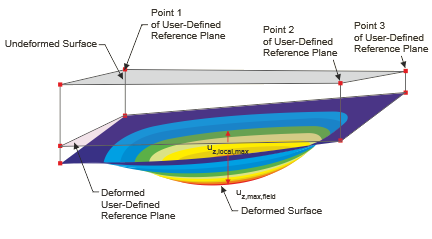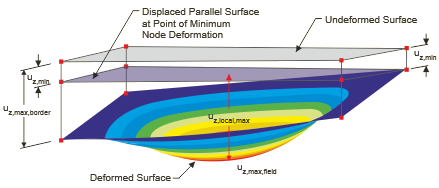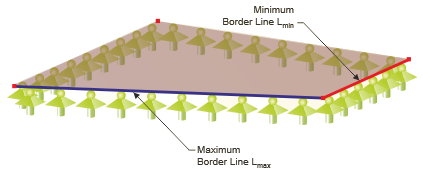In the Deflection tab, you can enter the specifications for the deflection analysis of the surface.
Deflection Analysis
The "Surface type" defines which limit values of the deflection are applied in the design. They are entered in the Serviceability Configurations dialog box for double-sided supports (floor slab) and for one-sided supports (cantilever slab).
The "displacement reference" controls which model is used as a reference for the deformation analysis. The list includes three options:
- Deformed user-defined reference plane: If the supports have very different displacements, you should specify an inclined reference plane for the designed displacement uz. Define the plane in the "User-Defined Reference Plane" section with three points of the undeformed structural system. RFEM determines the deformation of the three definition points, places the reference plane through these displaced points, and uses the related maximum deformation uz for the design.
- Parallel surface at the point of minimum nodal deformation: This option is recommended for the surface with elastic supports. The maximum deformation uz refers to a reference plane displaced in parallel to the undeformed system, which RFEM places through the node with the smallest displacement value uz,min.
- Undeformed system: The local deformations uz are taken directly from the results and used for the design.
The limit value of the deflection depends on the "reference length" Lz. You can define this length by selecting the "Manually" definition type in the list on the right. If you select "By maximum boundary line" or "By minimum boundary line", RFEM determines the length of the longest or shortest edge from the surface geometry, and sets the reference length automatically.



